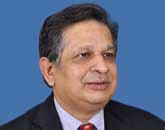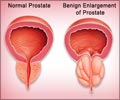3. What is the difference between monopolar and bipolar TURP?Saline cannot be used with monopolar cautery due to its electrical conducting properties. It can however be used with bipolar cautery. Bipolar cautery also causes lesser tissue damage, lesser chances of TURP syndrome, reduced duration when the patient will require a catheter, and sometimes faster discharge from the hospital.
4. Which are the other procedures that can be done for the treatment of BPH?Prostate enlargement can be tackled through various surgical procedures besides TURP. While TURP continues to enjoy its position as the gold standard for treatment of the prostate gland but with various options that are available, the treatment can now be customised depending on the risk of surgery, size of the gland and the convenience of the surgery itself.
TURP is generally reserved for glands that are over 30 gms to about 80 to 100 gms in size. The various other options are listed below:
- Transurethral incision of the prostate (TUIP) or Bladder Neck Incision (BNI) of the prostate: In this procedure cuts are made in the prostate gland and bladder neck using heat like electric current. The current can by either monopolar or bipolar type.It is usually reserved for tight bladder neck and small gland in a relatively younger patient.
- Holmium Laser Enucleation of the Prostate (HoLEP): In this procedure, laser is used to cut off pieces of the prostate. It is useful in large prostate glands over 100 gms in size.
- Aquablation of the Prostate gland: this is another minimally invasive procedure that uses high-pressure saline to remove the enlarged prostate gland tissue using hydro-dissection. Early results are encouraging as it reduces the resection time. It is not suitable for large prostates or if there is a median lobe and the patient has urinary retention.
- UroLift: It is a safe day procedure that does not cause erectile or ejaculatory dysfunction and is indicated in patients on anti-coagulants who have either moderate to severe symptoms or are in acute retention due to the prostate enlargement. It requires no cutting of the gland but uses tiny implants to lift and hold the enlarged prostate tissue so that it does not block the urinary passage
- Open prostatectomy: Open prostatectomy is an open surgery on the prostate. Depending on the site of the incision, open prostatectomy may be retropubic prostatectomy, suprapubic prostatectomy, and perineal prostatectomy. It is usually reserved for large glands over 100 to 150 gms in size.
- Transurethral needle ablation: In this procedure, needles that transmit radio frequency energy and destroy prostatic tissue are introduced through a cystoscope. This again is a day procedure.
- Transurethral microwave thermotherapy: In this procedure, an antenna is introduced through a catheter which sends microwaves and heats and destroys the prostate tissue. This again is a day procedure.
- High-intensity focused ultrasound: A special ultrasound probe is introduced into the rectum, which destroys some of the prostate tissue
- Water-induced thermotherapy: In this procedure, heated water is introduced into a treatment balloon through a catheter, which destroys the prostate tissue through heat
- Vaporization of the prostate tissue can be brought about with the help of an electric current (Transurethral Electroevaporation of The Prostate (TUVP)) or through laser Photoselective Vaporization (PVP)
- Prostate-stent insertion: In this procedure, a stent is inserted into the prostatic urethra so that it widens the opening and makes it easy for the urine to flow. It is a temporary procedure and seldom used.


















My husband is to have the TURP procedure on June 2. He can not lie flat on his back because of his shortness of breath. Can the procedure be done in HALF sitting position? Has had cathater in for 3 months.